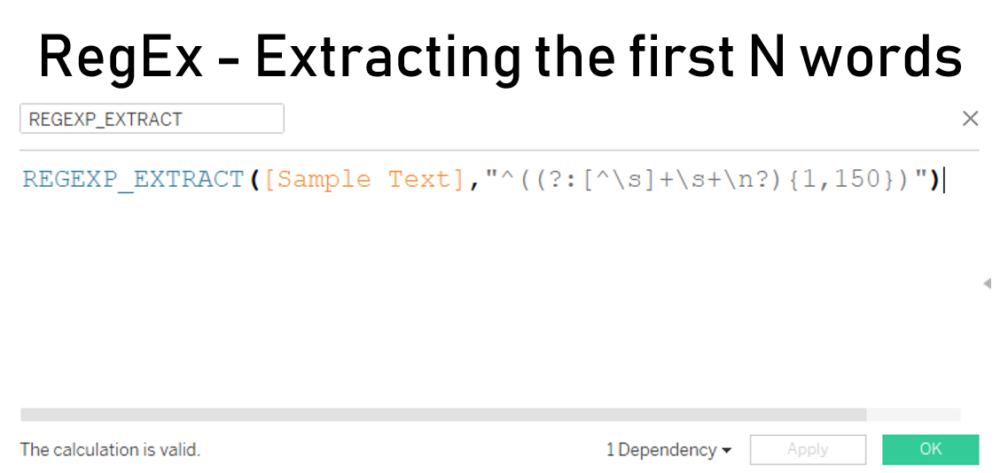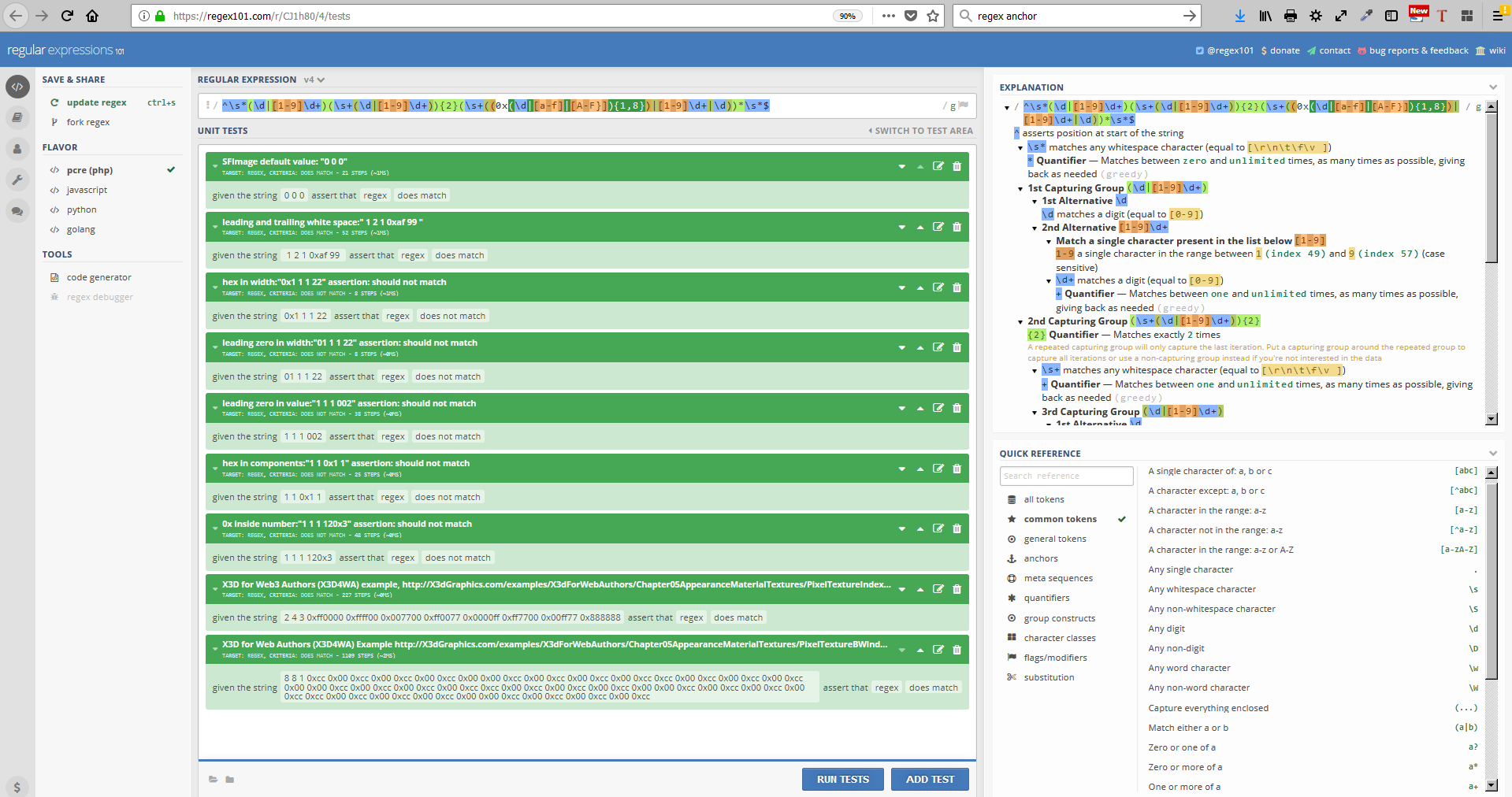

- #PERL REGEX FOR NUMBER WITH A LEADING SPACE SOFTWARE#
- #PERL REGEX FOR NUMBER WITH A LEADING SPACE CODE#
- #PERL REGEX FOR NUMBER WITH A LEADING SPACE ISO#
Relics of this can be found today in the glob syntax for filenames, and in the SQL LIKE operator. Prior to the use of regular expressions, many search languages allowed simple wildcards, for example "*" to match any sequence of characters, and "?" to match a single character. Its use is evident in the DTD element group syntax. The kernel of the structure specification language standards consists of regexes.
#PERL REGEX FOR NUMBER WITH A LEADING SPACE ISO#
The use of regexes in structured information standards for document and database modeling started in the 1960s and expanded in the 1980s when industry standards like ISO SGML (precursored by ANSI "GCA 101-1983") consolidated. These rules maintain existing features of Perl 5.x regexes, but also allow BNF-style definition of a recursive descent parser via sub-rules. The result is a mini-language called Raku rules, which are used to define Raku grammar as well as provide a tool to programmers in the language. Part of the effort in the design of Raku (formerly named Perl 6) is to improve Perl's regex integration, and to increase their scope and capabilities to allow the definition of parsing expression grammars. Perl later expanded on Spencer's original library to add many new features.
#PERL REGEX FOR NUMBER WITH A LEADING SPACE SOFTWARE#
Software projects that have adopted Spencer's Tcl regular expression implementation include PostgreSQL. The Tcl library is a hybrid NFA/ DFA implementation with improved performance characteristics. In the 1980s the more complicated regexes arose in Perl, which originally derived from a regex library written by Henry Spencer (1986), who later wrote an implementation of Advanced Regular Expressions for Tcl. Regexes were subsequently adopted by a wide range of programs, with these early forms standardized in the POSIX.2 standard in 1992. Many variations of these original forms of regular expressions were used in Unix programs at Bell Labs in the 1970s, including vi, lex, sed, AWK, and expr, and in other programs such as Emacs. Ross implemented a tool based on regular expressions that is used for lexical analysis in compiler design. Around the same time when Thompson developed QED, a group of researchers including Douglas T. He later added this capability to the Unix editor ed, which eventually led to the popular search tool grep's use of regular expressions ("grep" is a word derived from the command for regular expression searching in the ed editor: g/ re/p meaning "Global search for Regular Expression and Print matching lines").
#PERL REGEX FOR NUMBER WITH A LEADING SPACE CODE#
For speed, Thompson implemented regular expression matching by just-in-time compilation (JIT) to IBM 7094 code on the Compatible Time-Sharing System, an important early example of JIT compilation. Among the first appearances of regular expressions in program form was when Ken Thompson built Kleene's notation into the editor QED as a means to match patterns in text files. Regular expressions entered popular use from 1968 in two uses: pattern matching in a text editor and lexical analysis in a compiler. Other early implementations of pattern matching include the SNOBOL language, which did not use regular expressions, but instead its own pattern matching constructs. These arose in theoretical computer science, in the subfields of automata theory (models of computation) and the description and classification of formal languages. Regular expressions originated in 1951, when mathematician Stephen Cole Kleene described regular languages using his mathematical notation called regular events.

The concept of regular expressions began in the 1950s, when the American mathematician Stephen Cole Kleene formalized the description of a regular language. It is a technique developed in theoretical computer science and formal language theory. Usually such patterns are used by string-searching algorithms for "find" or "find and replace" operations on strings, or for input validation. A blacklist on Wikipedia which uses regular expressions to identify bad titlesĪ regular expression (shortened as regex or regexp also referred to as rational expression ) is a sequence of characters that specifies a search pattern in text.


 0 kommentar(er)
0 kommentar(er)
